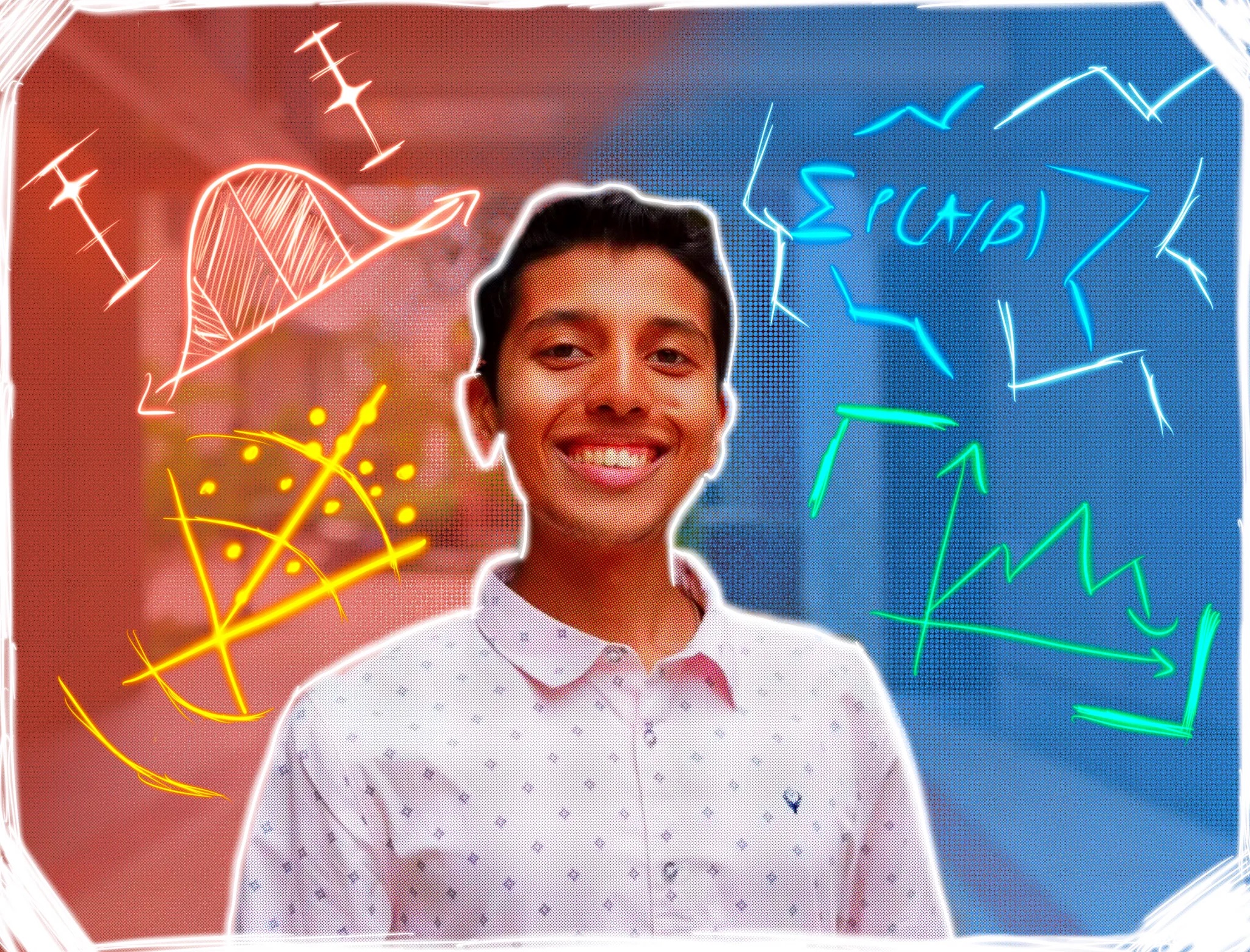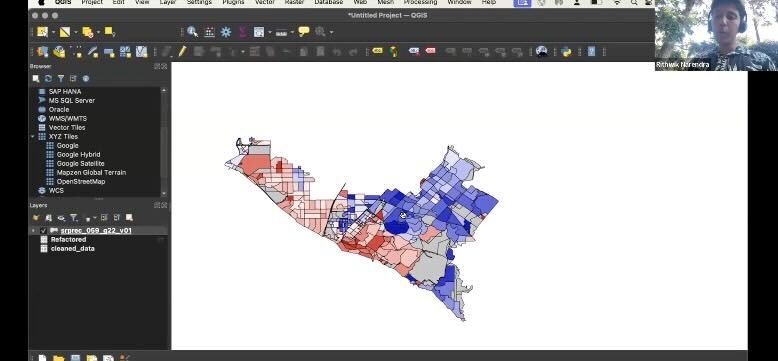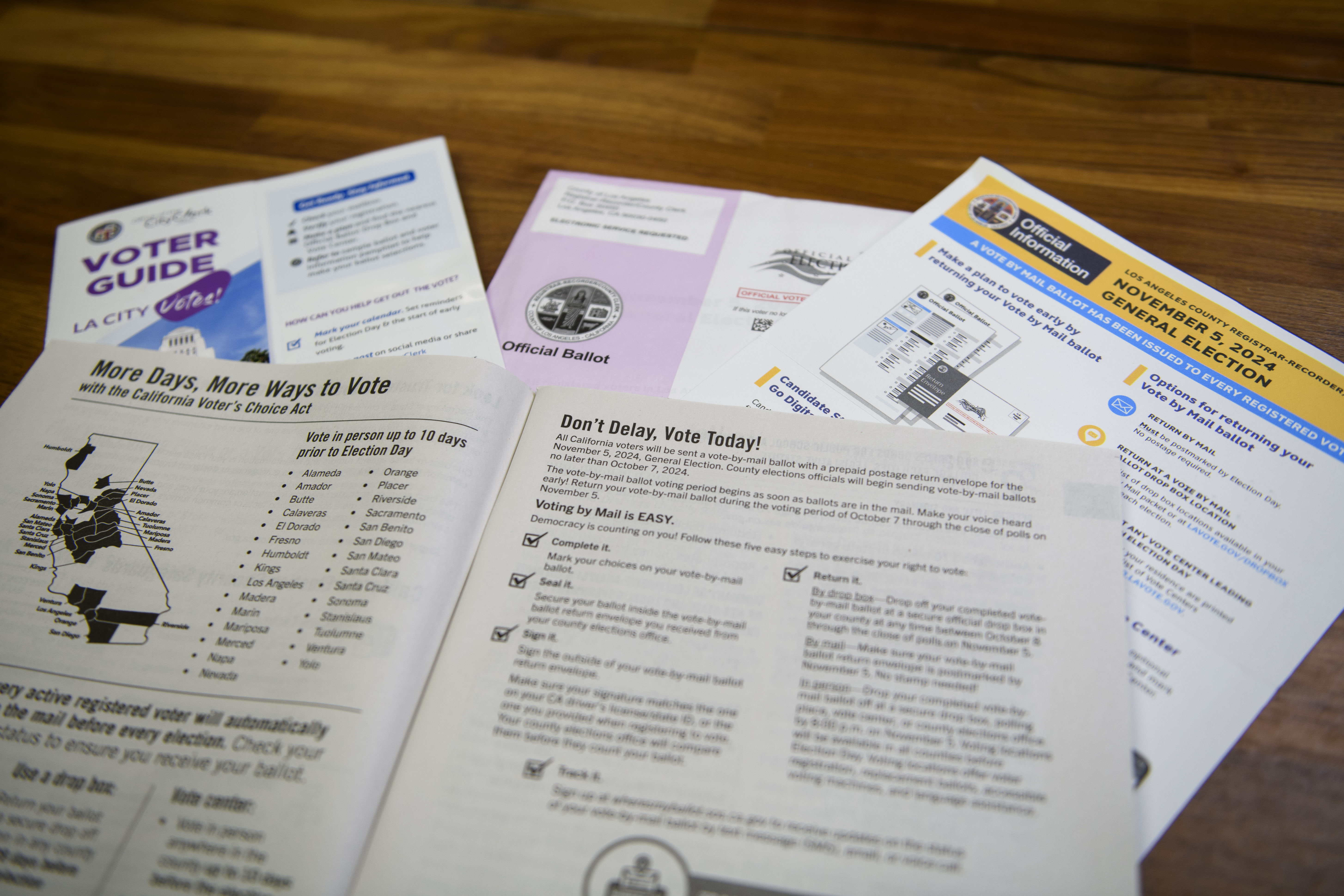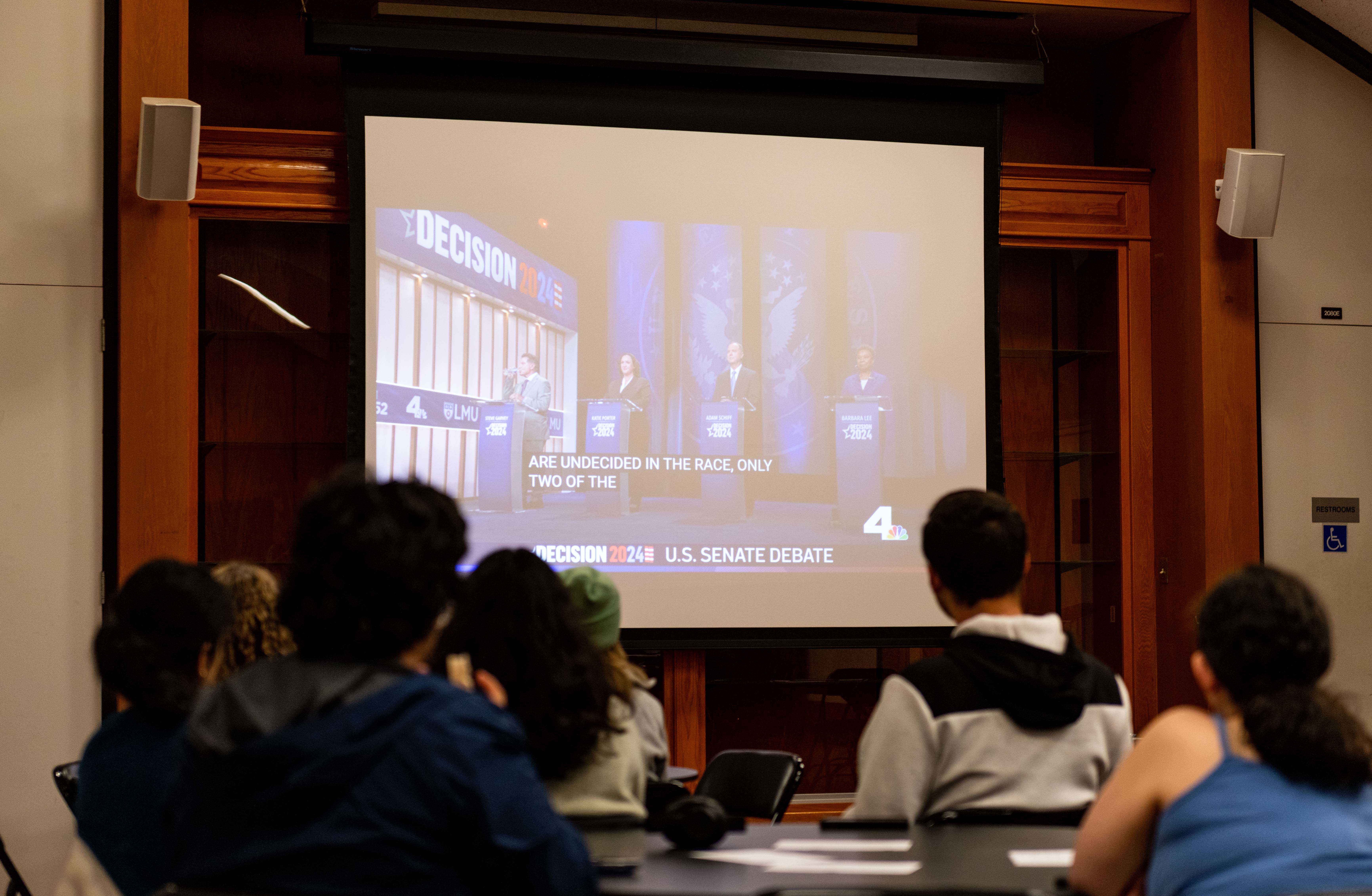Student, part-time electoral statistician goes to DC to model election predictions

Rithwik Narendra is pictured next to statistical symbols. The third-year computational and systems biology student will use statistical modeling to predict the outcome of the upcoming presidential election in Washington D.C. as part of Decision Desk HQ. (Photo courtesy of Rithwik Narendra. Photo Illustration by Matthew Park/Daily Bruin staff)
By Saya Mueller
Nov. 4, 2024 1:49 a.m.
Rithwik Narendra works a job uncommon for most undergraduate students.
As a part-time electoral statistician, the third-year computational and systems biology student will soon juggle midterms with his upcoming trip to Washington, D.C., where he will work to predict the outcome of the upcoming presidential election. Yet to Narendra, his managerial position at Decision Desk HQ is more than a job – it’s a chance to be a part of the election excitement, he said.
“I feel like going to D.C. in an election should be pretty crazy, and I want to experience the atmosphere,” Narendra said.
Statistical modeling has been used in the last few years for various elections to analyze the possibilities of each candidate’s success, Narendra said. Models often help legitimize election results as they compound incremental data from each polling site and compare patterns to past historical trends, thus statistically backing the election’s outcome, he added.
Narendra said creating the models requires incredible attention to detail, as corrections to the results after they are published – whether in the code used or the data entered – can discredit their validity.
Along with the accuracy of the models, the primary stressor for electoral statisticians is time, Narendra said. A delayed result not only puts his team behind competing organizations, but can also fuel doubt around the accuracy of the electoral polls as viewers may claim the results were manipulated, he said.
“The pressure makes a diamond, in a sense,” Narendra said. “You have to be both fast but also very, very accurate.”
Narendra said his managerial role in D.C. requires him to lead a group of volunteers based at Georgetown University as they work to gather data in real time.
The models are largely created by combining past trends with live data from different voting precincts, Narendra said. Acquiring the data takes many phone calls to county clerks, web scrapes to gather information by extracting data from the websites and the coordination to make it all happen, he added.
“A large part of my work is to make sure we have people on the ground in various places and looking at the Internet and making calls to county clerks to get those results quickly so we can run them through our model,” Narendra said.

Along with racing against time and other companies, modeling for a high-profile election campaign comes with consciously avoiding bias when publishing the results, Narendra said.
“What’s important is democracy. Your partisanship doesn’t really matter,” Narendra said.
The results of the statistical models will be seen by people across the country. Narendra said organizations including The Economist, Vox and Business Insider are past clients of DDHQ.
Although this is the first time he will be in Washington, D.C. for an election, Narendra said he has past experience working for midterm and primary elections.
One such experience came from working at Bluebonnet Data, a volunteer-based political data organization, where he met Marco Mora, an independently contracted statistician and fellow volunteer, Narendra said.
Although the two work for rivaling companies for the upcoming election, Mora said Narendra has been someone he could constantly count on.
“Whenever we run into some sort of data situation and we need someone that has good experience and is reliable and inventive, Rithwik gets in there and figures a solution out,” Mora said.
As the sheer amount of data can make statistical modeling tedious, there are times when coding a program can speed up the process, Mora said. He added that when he was held back by the tedious manual work of his data collection, Narendra stepped in to help.
The task required a web scrape of the Massachusetts Secretary of State website to extract electoral data and reformulate it so they could run their analyses, Mora said. In another similar situation, Narendra set up a Python code to eliminate 93% of their manual workload, he said.
“It was actually mind-boggling,” Mora said.
Outside of his work within the statistical modeling space, Narendra keeps up with his schoolwork, friends and global news, said Ansh Purohit, a third-year mathematics/economics student.
“I don’t think you’re going to find anyone at UCLA with that level of passion for what’s happening anywhere in the world,” Purohit said.
The two met as next-door neighbors during move-in day of their freshman year, Purohit said. He added that the friendship quickly developed as they discussed linguistic developments in South Asia while walking to the annual Westwood Block Party.
Their conversations now range from sports to music to Lithuanian elections, Purohit said.
“You must have heard the phrase, ‘Jack of all trades, master of none,’” Purohit said. “I would probably say, ‘Jack of all trades, master of most.’”
In terms of words of encouragement for aspiring electoral statisticians, the field is not limited to just students studying statistics or political science, Narendra said.
“Just be civically minded, be interested, read the news and care about democracy,” he said.





